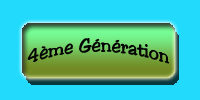




 |
 |
 |
 |
 |
|
|
|
|
|
Being the hands and eyes of the sculptorIn his craftsmanship of sculpture reproducer, Gerard Haligon controls the various steps to go from the creation - the pattern - done by the sculptor to reproduction in one or more proofs. So that the result meets the requirement of the artist wishes, the reproducer must have the sense of sculpture, know the working methods and technics and adapt to the requirements of each sculptor. This activity requires a high personal involvment level but in such a way as to reveal only the work of the Creator ! This Art profession is based upon the close relationship between the craftsman and the sculptor, this one remaining "the only master on board". Artists contribute as often as they wish in the process of reproduction whatsoever to participate in specific steps or to control the finished Artwork.
The proverb of this profession according to which the sculpture reproducer is the “extension of the hand” of the sculptor is true but sometimes in a very concrete way. This is for example the story of the collaboration with Ma Desheng, painter Artist who, because of his disability, could not express himself in three dimensions. Gerard Haligon worked closely with him for the creation phase since the sculpture was executed in the presence of Ma Desheng and according to his instructions.
Enlargement and Reduction of sculptureSculpture enlargement and reduction are traditionally made with a three dimensions pantograph. Thanks to modern technologies, Gerard Haligon now uses the latest digital techniques to achieve the same result. Sometimes, the traditional (but now rare) mechanical enlargement remains the only technique that can be used. Enlargements or reductions are generally made of expanded polystyrene or special plaster according to the needs of the Artist or to the requirement of the design. The sculptor can participate to the assembly or to the finish phase.
3 dimensions Pantograph = hand and power tool used to replicate a volume in a given report. The pantograph, originally developed by Colas, has been modernized and improved by Victor Haligon (Gerard’s grandfather) and has virtually not been modified since: A machine from the last century, but definitely still relevant. Also in the section "Actualites"article on “new technologies”. Silicone Art moulding (molding)
The mould is made in at least two parts with a silicone skin (rubber impression) maintained in a coating plaster (used to keep the volume). This moulding technique ensures a very precise impression to the micron size and allows the reproduction of several proofs. The downside: the life of this synthetic material is short. If the mould should be used to make only a single proof (in the case of a monumental work) we prefer the “creux perdu” moulding technique which is less expensive. It is a plaster mould made directly on the model and destroyed at the removal of the final single proof. Resin proofs & editionOur area of expertise is to make sculpture proofs and edition in polyester resin from silicone moulds. Proofs are made entirely by hands, usually using the technique of stratification. Inside the mould we apply several lays of resin and a laminated fiberglass which ensures the strength of this material. For large or outdoor Artworks, it is sometimes necessary to add an internal metal structure inside the resin proof. Those structures are systematically made in stainless steel to prevent corrosion and ensure the durability of the sculpture. The surface layer of the resin proof may be white (in case of a subsequent application of paint), colored in the mass, added with powders or pigments according to the desired effect or as required by the sculptor. Resin proofs can also be covered with gold leaf. The size of the edition is fixed right from the beginning. The sculptor can decide to issue an Original Artwork Edition limited to 12 identical proofs (8 proofs numbered 1 to 8 / 8 + 4 proofs called Artist's Proofs numbered EA I to IV / IV). An edition that includes a higher number of proofs is then called “multiple edition”.
The resin material is much sought-after owing to its many advantages: wide range of finish - great adaptation to the needs of creation - low weight easier for shipment - long-term durability (when exposed outdoor, painted surfaces have to be maintained regularly). Finish & Polychrome: classic or metallic paint, brush or spray painting, gilding, etc...Once again the use of resin provides sculptors with a fantastic freedom in choosing the final aspect of their Artwork: colored resin, painting (water-based, polyurethane, acrylic , ..) or material giving a plaster or marble effect for example. The paint finish can be: matte, satin, gloss. And of course a wide range of colors is available for each of these materials. This discipline is subject to permanent research to find the best suitable products especially for outdoor exposure.
Restoration (Official & Exclusive Restorer of Resin Artworks by Niki de Saint Phalle)Despite the strength of resin, sculpture can sometimes be damaged: impact during transport, malicious damage, consequences of weather and UV exposure in outdoor parts, etc.. Official & Exclusive Restorer of Resin Artworks by Niki de Saint Phalle BEFORE Painting restoration of "Chat Vase" by Niki de Saint Phalle BEFORE
Painting restoration in 2006 of "le Jardinier" by Chassepot Care instructions:There are simple precautions to take to ensure the durability of outdoor exposed Artworks, to avoid getting in the extreme situations shown above ! |